An arrow of mass is fired horizontally towards an apple of mass that is hanging on a string, as shown in Figure. The horizontal velocity of the arrow as it enters the apple is . The apple was initially at rest and the arrow sticks in the apple.Calculate the change in momentum of the arrow during the impact.
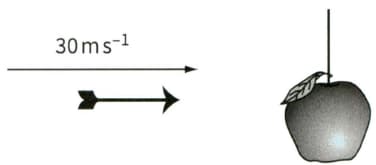


Important Questions on Momentum
b An arrow of mass is fired horizontally towards an apple of mass that is hanging on a string, as shown in Figure. The horizontal velocity of the arrow as it enters the apple is . The apple was initially at rest and the arrow sticks in the apple.Calculate the change in total kinetic energy of the arrow and apple during the impact.
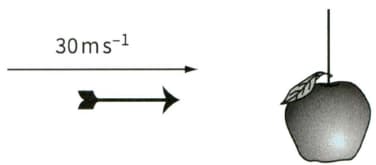
b An arrow of mass is fired horizontally towards an apple of mass that is hanging on a string, as shown in Figure. The horizontal velocity of the arrow as it enters the apple is . The apple was initially at rest and the arrow sticks in the apple.
(iv) A rubber-tipped arrow of mass is fired at the centre of a stationary ball of mass . The collision is perfectly elastic. Describe what happens and state the relative speed of separation of the arrow and the ball.

State what is meant by a perfectly elastic collision.
State what is meant by:
(ii) A completely inelastic collision.
(b) A stationary uranium nucleus disintegrates, emitting an alpha-particle of mass and another nucleus of mass .
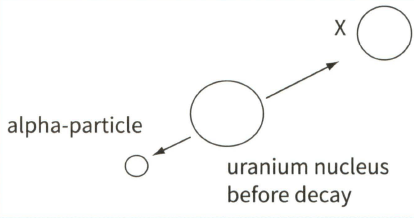
(i) Explain why the alpha-particle and nucleus $X$ must be emitted in exactly opposite directions.
A stationary uranium nucleus disintegrates, emitting an alpha-particle of mass and another nucleus of mass .
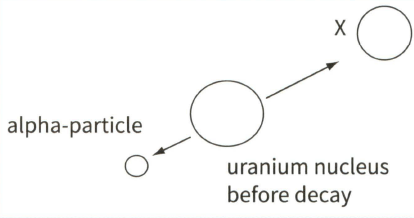
Using the symbols and For velocities, write an equation for the conservation of momentum in this disintegration.
A stationary uranium nucleus disintegrates, emitting an alpha-particle of mass and another nucleus of mass .
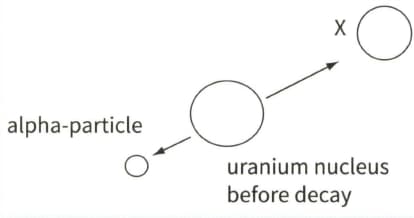
Calculate the ratio after the disintegration.
(a) State two quantities that are conserved in an elastic collision.
